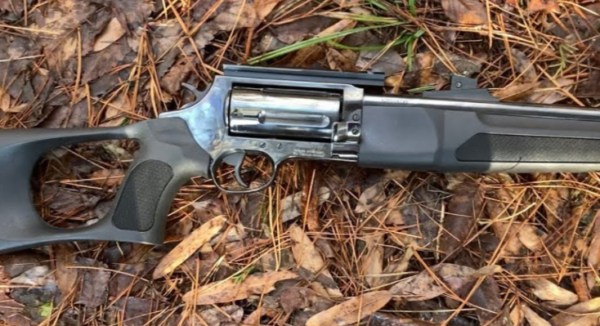Hi dear visitor welcome to our blog.
Glock 30 Gen 4 is one of the best brands in the world of guns.
But some people face problems with this model.
In this guide, we explain 15 common problems of this model with unique solutions. So let’s start now.
Glock 30 Gen 4 Problems

Despite Glock’s reputation for reliability, some Glock 30 Gen 4 owners have reported a few problems.
The most common issues include stiff magazine release, increased recoil due to the subcompact design, and initial feeding problems with certain types of ammunition.
However, most of these concerns tend to resolve over time or can be fixed with minor modifications.
1. Misfire Issues
Cause
Misfires in the Glock 30 Gen 4 can be attributed to several factors.
The most common cause is often linked to faulty ammunition, where the primer is improperly seated or the powder charge is inadequate.
Additionally, a dirty or damaged firing pin can lead to misfiring.
Extractors with chips or wear can also contribute to this problem, preventing the round from being properly seated in the chamber.
Solution
The solution to misfire issues lies in first identifying the problematic component. If the issue is related to ammunition, switching to a different brand or batch may resolve the issue.
Cleaning or replacing a dirty or damaged firing pin can also help.
If the extractor is the culprit, it is recommended to replace the worn-out extractor with a new one to ensure the proper seating of rounds in the chamber.
Regular maintenance and cleaning of your Glock can also prevent such issues, ensuring the gun’s optimal performance.
2. Ejection Problems
Cause
Ejection problems often originate from inadequate lubrication or wear and tear of the ejection mechanism.
Specifically, the frequent usage of a machine without proper maintenance can lead to the gradual degradation of its components, which can eventually result in ejection problems.
Solution
To combat ejection problems, the regular servicing and lubrication of the machine’s components are paramount.
This preventive measure helps reduce friction among parts, ensuring their efficient operation.
Additionally, replacing worn-out parts promptly can significantly minimize the chances of ejection issues, ensuring the longevity and effectiveness of the machine.
3. Trigger Reset Failure
Cause
The “Trigger Reset Failure” commonly arises due to issues in the trigger mechanism, such as a worn-out trigger spring or an improperly installed trigger group.
This failure can also be caused by the accumulation of dirt or debris within the trigger assembly, reducing the efficiency of its components.
Solution
The solution to a Trigger Reset Failure often involves disassembling the trigger group and thoroughly cleaning the components.
Replacement of the trigger spring or other worn-out parts may also be necessary.
It’s highly recommended to seek professional assistance if you’re unfamiliar with the internal components of your firearm.
Always ensure the firearm is unloaded before starting any form of maintenance.
4. Improper Slide Lock
Cause
An improper slide lock often arises due to a combination of excessive wear, incorrect installation, or inadequate lubrication.
Over time, these factors can lead to the distortion of the slide lock components, causing them to malfunction or fail to secure the slide properly.
Solution
Addressing an improper slide lock requires both inspection and maintenance. Ensure that the lock is correctly installed and adequately lubricated to minimize friction.
Regularly inspect the lock for signs of wear and replace any worn-out components promptly. Always use high-quality parts to ensure longevity and proper operation of the slide lock.
5. Holster Compatibility Issues
Cause
The primary cause of holster compatibility issues often lies in the mismatch of firearm and holster dimensions.
The size, shape, and design of the firearm can determine the fitness for a specific holster.
Another common cause can be the lack of accommodation for firearm accessories, such as special sights, extended barrels, or suppressors.
Solution
To mitigate these compatibility issues, it’s recommended to choose a holster designed specifically for your firearm model.
Consulting with manufacturers or trusted retailers can provide valuable advice.
Moreover, for firearms with additional accessories, consider custom-made holsters or ones with adjustable fittings. Remember, a well-fitting holster is key to safety and performance.
6. Magazine Release Difficulties
Cause
Often, the cause of magazine release difficulties can be attributed to a buildup of grime, dust, and residue, particularly in the magazine release mechanism.
Lack of regular cleaning and maintenance can lead to this issue, causing the magazine release button to stick or become unresponsive.
Solution
The solution to this problem is relatively straightforward. A thorough cleaning of the firearm, specifically focusing on the magazine release mechanism, can alleviate this issue.
Using a quality gun cleaning solution and a small brush, gently clean the magazine release and surrounding areas.
Additionally, consider applying a small amount of lubricant to ensure smooth operation. Regular maintenance is the best preventative measure against this issue.
7. Recoil Spring Failures
Cause
Recoil spring failures often occur due to excessive wear or improper installation.
The spring, despite being made from resilient material, can be subject to fatigue, especially during heavy use or under high-impact conditions.
Prolonged use without proper maintenance could speed up this wear and tear process.
Moreover, an improperly installed spring can cause uneven pressure distribution, increasing the likelihood of failure.
Solution
To prevent recoil spring failures, regular inspection and maintenance are crucial. The spring should be checked for signs of wear, deformities, or breakage and replaced if necessary.
Furthermore, proper installation is key to ensuring the longevity of the recoil spring.
If unsure about how to correctly install the spring, the user is advised to seek professional assistance.
8. Barrel Peening
Cause
Barrel peening typically occurs when there is excessive vibration or movement in the barrel of a firearm during firing.
This can lead to the barrel’s inner surface becoming irregular or distorted, potentially impacting the firearm’s accuracy.
The primary causes of barrel peening are often a lack of proper maintenance, misuse, or the use of substandard ammunition.
Solution
The solution to barrel peening involves a meticulous inspection and possible reworking or replacement of the barrel.
Gunsmiths can use a process known as lapping to smooth any irregularities, restoring the barrel to its optimal condition.
also, practicing proper firearm maintenance and using high-quality ammunition can prevent barrel peening. Regular cleaning, lubrication, and inspection can significantly reduce the risk of this issue.
9. Excessive Wear and Tear
Cause
Excessive wear and tear often result from the continued use of machinery or equipment beyond its operational capacity.
It’s a cumulative process, worsened by inadequate maintenance, mismanagement, or overuse.
This can result in reduced functionality, and efficiency, and often leads to machine failure. Preventive measures, regular maintenance, and proper handling are crucial in avoiding excessive wear and tear.
Solution
The solution to excessive wear and tear lies in implementing a robust maintenance plan.
This should include regular inspections, timely repairs, and replacement of worn-out parts. Adhering to the manufacturer’s guidelines for usage and maintenance can significantly prolong the lifespan of equipment.
Furthermore, training staff on proper handling and usage of equipment can also minimize unnecessary wear and tear. Remember, prevention is always better than cure when it comes to wear and tear.
10. Inadequate Lubrication
Cause
Inadequate lubrication is primarily caused by insufficient or improper application of lubricant in machinery.
This can result from neglecting regular maintenance or using a lubricant unsuited to the operating conditions or machinery type.
When lubrication is inadequate, friction between mechanical parts is increased, leading to overheating and, eventually, failure.
Key causes include irregular maintenance, wrong lubricant type, and extreme operating conditions.
Solution
The solution to inadequate lubrication lies in regular maintenance and scrutiny of machinery.
Using the right type of lubricant suitable for the machine and its operating conditions is of paramount importance.
Moreover, establishing a routine for lubricant replenishment can significantly reduce the risk of machinery failure.
Solutions include regular machinery checks, appropriate lubricant selection, and a defined lubrication schedule.
11. Finish Durability Concerns
Cause
The primary cause of finish durability concerns stems from environmental factors.
Exposure to harsh sunlight, extreme temperatures, and moisture can degrade the finish over time, leading to dullness, cracks, or peeling.
Furthermore, improper or infrequent maintenance, such as not regularly cleaning or treating the finish, can also contribute to its diminished durability.
Solution
The ideal solution to enhancing finish durability involves a two-pronged approach: prevention and maintenance.
The use of high-quality, weather-resistant finishes and sealants can provide a robust barrier against environmental damage.
Regular cleaning and treatment of the finish, along with timely repairs of any visible damage, can significantly extend the lifespan of the finish.
A robust maintenance schedule is an essential part of ensuring finish durability.
12. Grip Size Discomfort
Cause
The primary cause of grip size discomfort is typically the usage of equipment that is not appropriately sized for the individual’s hand.
In sports such as tennis or golf, using a racket or club with a grip size that is either too large or too small can lead to discomfort, strain, and even injury.
Incorrect grip size places excessive pressure on the hand muscles, leading to fatigue and discomfort.
Solution
The simple solution to grip size discomfort is to ensure the use of equipment with a grip that suits the individual’s hand size.
This might involve measuring hand size or experimenting with different grip sizes until the right fit is found.
Adjustable grips can also be a viable option, allowing for customization as per individual comfort and requirement. It’s always recommended to consult with a professional to find the right equipment for your specific needs.
13. Slide Bite Issues
Cause
Slide bite, or “hammer bite,” happens primarily in semi-automatic handguns, especially in designs where the back end of the slide and grip are very close to each other.
It’s caused when the slide or hammer of the firearm recoils backward and hits the webbing between the shooter’s thumb and forefinger.
This can often occur if the shooter has a high grip on the gun or has larger hands.
Key Causes: Size of the Handgun, High Grip, Large Hands
Solution
The two most common solutions for slide bite are adjusting your grip and using handguns with a beaver tail or extended tang.
Firstly, changing your grip to a lower one may prevent the slide from contacting the hand.
Secondly, using a handgun with a beaver tail or extended tang can also protect the hand from the recoiling slide.
Key Solutions: Adjusting Grip, Using Handguns with a Beaver Tail or Extended Tang
14. Difficulty in Field Stripping
Causes
Field stripping can be quite challenging due to a variety of reasons. Firstly, the complexity of the design and construction of some firearms makes the disassembly process intricate.
Secondly, a lack of adequate knowledge and experience can also lead to difficulty in field stripping.
Lastly, insufficient or improper use of tools can lead to complications during the disassembly process.
“Complex design, lack of knowledge, and improper use of tools contribute significantly to the challenges faced during field stripping.”
Solutions
Overcoming the difficulty in field stripping can be achieved by several means. The first solution is education and training.
Understanding the mechanics and structure of your firearm is key in facile field stripping. Secondly, invest in quality stripping tools that are appropriate for your specific firearm.
Lastly, practice regular maintenance and cleaning, this not only keeps the firearm in good condition but also gives you a routine familiarity with its parts.
“Invest in education, quality tools, and regular maintenance to simplify the field stripping process and increase efficiency and safety.”
15. Lack of Aftermarket Support
Cause
The lack of aftermarket support is often a consequence of manufacturers focusing on the production of new models, instead of providing parts and services for existing models.
This behavior can leave users feeling stranded, especially when their devices require maintenance or repair.
A lack of aftermarket support can lead to consumer frustration and decreased brand loyalty over time.
Solution
To counter this, manufacturers need to prioritize long-term customer support, ensuring the availability of spare parts and providing regular software updates for their products.
By investing in aftermarket support, manufacturers not only enhance customer satisfaction but also foster brand loyalty.
This approach may require a re-evaluation of business strategies, but the long-term customer retention benefits make it well worth the effort.
Conclusion
The integration of digital technology has revolutionized the way we approach various aspects of our lives, not least of which is education.
It has transformed traditional teaching methods, enabling a more comprehensive, interactive, and engaging learning experience.
However, it is essential to remember that technology is just a tool. Its effectiveness depends on how well it is utilized.
Therefore, continual research and development are necessary to adapt and enhance these tools according to evolving educational needs and practices.
It’s a dynamic, exciting field with immense potential for future growth and innovation.
FAQs
Is the Glock 30 reliable?
Yes, the Glock 30 is known for its robustness and reliability in diverse conditions.
Why don’t people like Gen 4 Glocks?
Some people have reported experiencing grip issues with Gen 4 Glocks due to its larger size compared to previous generations.
Is it hard to shoot a Glock 30?
The Glock 30 is not particularly difficult to shoot, but its compact design might require some adjustment for those used to full-size handguns.
Are Gen 4 Glocks reliable?
Yes, Gen 4 Glocks continue to uphold the brand’s reputation for reliability and durability.


As the founder and owner of the domain “mygunsgeek.com”, I bring to the table a deep passion for firearms, combined with a strong commitment to sharing this knowledge with a wider audience. With years of experience exploring the inner workings of various firearms, from pistols to rifles, I have cultivated a vast expertise in this field. This has enabled me to create a platform that serves as a trusted resource for gun enthusiasts, providing comprehensive reviews, advice, and insights into the latest trends and advancements. I am dedicated to ensuring that my content is both informative and engaging, helping my readers make informed decisions about their firearm choices. For any inquiries or suggestions, feel free to reach out to me at wwwfffwww117@gmail.com. Your feedback is invaluable in shaping the content and direction of mygunsgeek.com.


